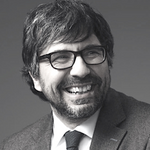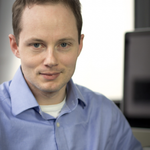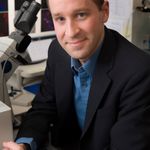2018 Speakers
Here are the speakers for the 2018 Boston Photonics Conference!
Keynote Speakers
Professor Ji-Xin Cheng, Ph.D.
Moustakas Professor in Photonics and Optoelectronics, Boston University
Title: Seeing the unseen in living systems through molecular fingerprints
Abstract: Current medical imaging tools rely on physical or physiological properties, rather than molecular content of the tissue. Without specific molecular information (biomarkers), it remains difficult to differentiate metastatic diseases from the benign forms. For molecular analysis, current strategies involve tissue homogenization, separation, followed by various in vitro assays to reveal the presence of molecules and their cellular concentrations. However, these approaches cannot provide the essential spatial and temporal dynamics information of molecules. Lack of the understanding of how molecules execute their functions in a living system has slowed the discovery of biomarkers for early diagnosis and precision treatment of human diseases. Ji-Xin Cheng and his research team are devoted to changing this conventional paradigm of medical imaging and bio-analysis through inventing and developing label-free spectroscopic imaging technologies (Science 2015, 350: 1054). Cheng will present the most forefront of the molecular spectroscopic imaging field in technology, application, and clinical translation perspectives.
Biography: Ji-Xin Cheng was born in Jixi, Anhui Province, P. R. China in 1971. He attended University of Science and Technology of China (USTC) from 1989 to 1994. From 1994 to 1998, he carried out his PhD study on bond-selective chemistry under the supervision of Qingshi Zhu at USTC. As a graduate student, he worked as a research assistant at Universite Paris-sud (France) on vibrational spectroscopy and the Hong Kong University of Science and Technology (HKUST) on quantum dynamics theory. After postdoctoral training on ultrafast spectroscopy in Yijing Yan’s group at HKUST, he joined Sunney Xie’s group at Harvard University as a postdoc, where he and others developed CARS microscopy that allows high-speed vibrational imaging of cells and tissues. Cheng joined Purdue University in 2003 as Assistant Professor in Weldon School of Biomedical Engineering and Department of Chemistry, promoted to Associate Professor in 2009 and Full Professor in 2013. He joined Boston University as the Moustakas Chair Professor in Photonics and Optoelectronics in summer 2017.
Professor Fiorenzo Omenetto, Ph.D.
Frank C. Doble Professor, Tufts University
Title: Reshaping Silk at the Interface Between Photonics and Life Sciences
Abstract: Structural proteins are Nature’s building blocks, conferring stiffness, structure, and function to ordinarily soft biological materials. Such proteins are polymorphic which allows controlling the end material format through their self-assembly. These biomaterials provide a unique opportunity by being simultaneously “technological” (e.g. mechanically robust, micro- and nanostructured, high-performing) and “biological” (e.g. living, adaptable, bio-functional) making them ideally suited for applications at the interface between these two domains.
Biography: Fiorenzo G. Omenetto is the Frank C. Doble Professor of Engineering, and a Professor of Biomedical Engineering at Tufts University. He also holds appointments in the Department of Physics and the Department of Electrical Engineering. His research interests are at the interface of technology, biologically inspired materials and the natural sciences with an emphasis on new transformative approaches for sustainable materials for high-technology applications. He also serves as Dean for Research for the School of Engineering. He has proposed and pioneered the use of silk as a material platform for advanced technology with uses in photonics, optoelectronics and nanotechnology applications, is co-inventor on several disclosures (~100) on the subject, and is actively investigating applications of this technology base both for technical and design applications. He is a co-founder of three startups and has active roles in their governance.
Prof. Omenetto was formerly a J. Robert Oppenheimer Fellow at Los Alamos National Laboratories, a Guggenheim Fellow, and is a Fellow of the Optical Society of America and of the American Physical Society and a Senior Member of SPIE and is a Tallberg Foundation Global Leadership Fellow. He was named one of the 50 top people in tech by Fortune magazine in a class including (among others) Steve Jobs, Jeff Bezos, Larry Page, Shigeru Miyamoto. His research has been featured extensively in the press with coverage in the most important media outlets worldwide.
Invited Speakers
Dirk R. Englund, Ph.D.
Associate Professor, MIT
Title: Semiconductor Quantum Technologies for Secure Communications and Scalable Quantum Networks
Abstract: The field of quantum optics offers new ways to compute, communicate, and measure with quantum states. Recent advances in materials, quantum control, and nanofabrication now open the prospect for scalable quantum technologies based on solid-state quantum systems. In particular, photonic integrated circuits (PICs) now allow routing photons with high precision and low loss, and atom-like systems in semiconductors enable spin-based quantum memories that can be coupled to these optical circuits. The first part of this talk will review our recent progress in adapting one of the leading PIC architectures—silicon photonics—for various quantum secure communications protocols. The second part of the talk will consider how PIC technology, integrated with quantum memories, can extend the reach of quantum communications and form the basis of modular quantum computers.
Biography: Dirk Englund received his BS in Physics from Caltech in 2002. Following a year at TU Eindhoven as a Fulbright Fellow, he earned his MS in EE and PhD in Applied Physics from Stanford University in 2008. He was a postdoctoral fellow at Harvard University until 2010, when he became Assistant Professor of E.E. and Applied Physics at Columbia University. He joined the MIT EECS faculty in 2013. Recent recognitions include the 2011 PECASE, the 2011 Sloan Fellowship in Physics, the 2012 DARPA Young Faculty Award, the 2017 ACS Photonics Young Investigator Award, and the OSA’s 2017 Adolph Lomb Medal.
Conor L. Evans, Ph.D.
Assistant Professor, Harvard Medical School
Abstract: Drug discovery, formulation development, and generic drug development all require detailed knowledge regarding the uptake and action of specific molecules. However, the majority of pharmaceutical agents are small molecules that cannot be tagged with traditional imaging agents without significantly altering both their pharmacokinetics and pharmacodynamics. Advancement microscopy methods, including coherent Raman and fluorescence lifetime imaging, are tools that can overcome these limitations for the quantification of drugs in tissue. We will show that, when paired with image analysis tools, pharmacokinetic tomography can reveal important information on the uptake of topical agents in the skin.
Biography: Dr. Conor L. Evans received his degrees from Brown University (BS in Physical Chemistry) and Harvard University (PhD in Chemistry). He carried out his postdoctoral training research under the supervision of both Tayyaba Hasan and Johannes de Boer in the application of advanced microscopy to cancer research. He now serves as an Assistant Professor at the Wellman Center for Photomedicine of Harvard Medical School at the Massachusetts General Hospital. The Evans lab’s research is focused on the development and clinical translation of optical microscopy and spectroscopy tools, with specific interests in ultrasensitive detection of molecular markers, label-free imaging of tissues, and the imaging and quantification of tissue oxygenation. Dr. Evans has led the use of coherent Raman imaging technologies in biomedicine, and was the first to apply this imaging toolkit for the real-time visualization of lipids in skin in vivo. He has developed a number of imaging devices and methods, including coherent Raman imaging, time-lapse Optical Coherence Tomography, hyperspectral confocal microscopy, tissue clearing methods, and “smart” sensing bandages. A recipient of the NIH Director’s New Innovator Award, his recent efforts in the synthesis of bright oxygen sensors has resulted in the creation of four new porphyrin molecules that are currently being translated for clinical use. He is a Royce Fellow of Brown University and has been honored with several awards, including the Goldwater Scholarship, NASA Space Grants, the National Science Foundation Graduate Fellowship, and the ASP New Investigator Award. Dr. Evans is a faculty member of the Laser Biomedical Research Center at MIT, a faculty member of the Harvard Ludwig Center, and an affiliate faculty member of the Harvard Biophysics Program.
Yongmin Liu, Ph.D.
Assistant Professor, Northeastern University
Title: Harnessing Light by Metasurfaces
Abstract: Metasurfaces, two-dimensional metamaterials, have recently emerged as a very active research area. By tailoring the geometry of the building blocks of metasurfaces and engineering their spatial distribution, we are able to control the amplitude, polarization state, phase and trajectory of light in an almost arbitrary manner. In this talk, I will discuss our recent work in employing metasurfaces to harness both propagating and evanescent waves, which promise efficient, miniaturized and multifunctional devices for biochemical sensing, optical communication and information processing. First, I will present a new concept of chiral metamirrors, which can achieve near-perfect reflection of designated circularly polarized light without reversing its handedness, yet complete absorption of the other polarization state [1,2]. This metamirror can be considered as the optical analogy of beetle Chrysina gloriosa in nature, while exhibits nearly maximal efficiency. Second, I will discuss that a designer metasurfaces consisting of C-aperture arrays can mold evanescent waves on demand. By adjusting the rotation of C-apertures, we can generate desired phase and polarization state when converting evanescent waves into propagating waves.
References: [1] Z. J. Wang et al., “Circular Dichroism Metamirrors with Near-Perfect Extinction”, ACS Photonics 3, 2096 (2016); [2] L. Kang et al., “Preserving Spin States upon Reflection: Linear and Nonlinear Responses of a Chiral Meta-Mirror”, Nano Letters 17, 7102 (2017); [3] Z. J. Wang et al., “Manipulating Smith-Purcell emission with Babinet metasurfaces”, Physical Review Letters 117, 157401 (2016).
Biography: Dr. Yongmin Liu obtained his Ph.D. from the University of California, Berkeley in 2009. He joined the faculty of Northeastern University at Boston in fall 2012 with a joint appointment in the Department of Mechanical & Industrial Engineering and the Department of Electrical & Computer Engineering. Dr. Liu’s research interests include nano optics, nanoscale materials and engineering, plasmonics, metamaterials, biophotonics, and nano optomechanics. He has authored and co-authored more than 60 journal papers, including Science, Nature, Nature Nanotechnology, Nature Communications, Physical Review Letters and Nano Letters. Dr. Liu was a recipient of NSF CAREER Award (2017), Office of Naval Research Young Investigator Award (2016), SPIE DCS Rising Researcher Award (2016), 3M Non-Tenured Faculty Award (2016), Air Force Summer Faculty Fellowship (2015), and Chinese Government Award for Outstanding Students Abroad (2009). Currently he serves as an editorial board member for Scientific Reports, EPJ Applied Metamaterials and Nano Convergence.
Gabriella Schlau-Cohen, Ph.D.
Assistant Professor, MIT
Title: Dynamics of light harvesting: Understanding & optimizing energy transport
Abstract: In photosynthetic light harvesting, absorbed energy migrates through a protein network to reach a dedicated location for conversion to chemical energy. The migration and conversion occurs with remarkable near-unity quantum efficiency. This process begins with a series of femto- to picosecond energy transfer steps controlled by the pigments and their environment. We describe the development of a bioinspired light-harvesting system constructed using DNA origami. Through this system, we explore how delocalized excited states can enhance the efficiency of energy transfer. In addition, the development of broadband ultrafast 2D electronic spectroscopy to probe energy transfer dynamics across the visible regime is discussed.
Biography: Gabriela Schlau-Cohen is the Thomas D. and Virginia W. Cabot Career Development Assistant Professor in the Department of Chemistry at the Massachusetts Institute of Technology. Her research group uses single-molecule spectroscopy and ultrafast spectroscopy to explore the energetic and structural dynamics of biological systems. She joined the faculty of MIT in 2015. Prior to MIT, she was a Postdoctoral Fellow of the Center for Molecular Analysis and Design at Stanford University, where she worked with Prof. W.E. Moerner. Dr. Schlau-Cohen received her PhD in Physical Chemistry in 2011 from the University of California, Berkeley, where she worked in the lab of Prof. Graham Fleming as an AAUW American Fellow. She received her B.S. in Chemical Physics in 2003 from Brown University. She is the recipient of a the NIH Director’s New Innovator Award, the Beckman Young Investigator Award, the Smith Family Award for Excellence in Biomedical Research, the Sloan Research Fellowship in Chemistry and she was selected as a CIFAR Azrieli Global Scholar.





